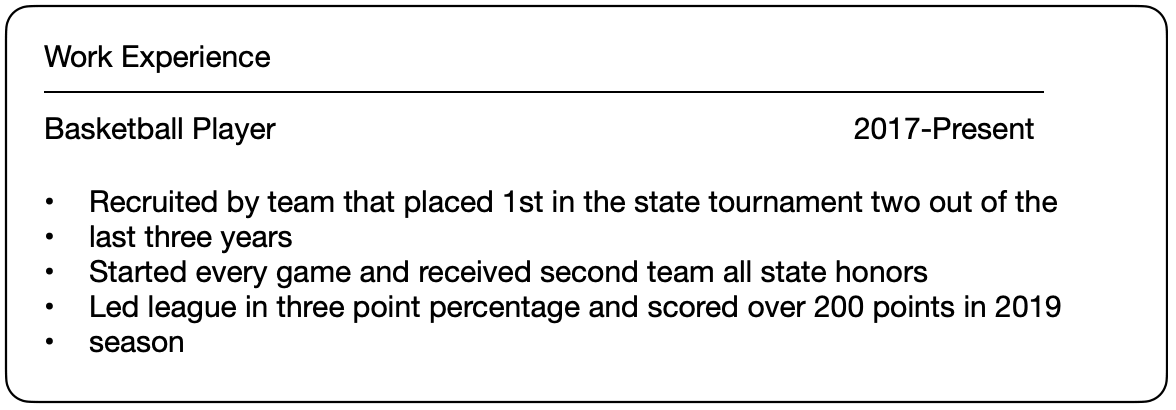Creating a resume isn’t as simple as it used to be because you have to make sure that it matches relevant keywords in the job description. The biggest difference between submitting a resume in today’s job searching environment compared to 20 years ago is that each individual resume should be fine-tuned to specifically match up with the job description that they’re applying to.
People (rightfully so) take a lot of time to create their resumes, but most don’t take the time to tweak their resumes to match each job that they’re applying to. We’re talking about the ultimate vehicle to put you in a position to land your dream job, so it’s worth taking the time to make sure you’ve got all the bases covered. In this article, we’re going to walk you through the three steps that you need to modernize your resume.
Need help to polish your CV? We have evaluated the best resume-writing services.
Modernizing Your Resume In Three Steps
Step 1: Highlighting Quantifiable Results
You’re obviously going to list your past work experience on your resume, but so will hundreds of others. In order to stand out, you need to also list your achievements in your past roles so the hiring manager will not only know what you did but how you did it. Citing proof of your accomplishments in past roles will give the hiring manager a better idea of what you’re capable of. “If they did that there, I wonder what they could do here?”
This is best done by listing quantifiable results in each bullet point within your job description and doing so with enthusiasm. You do this by incorporating a success verb and a number and being as detailed as possible.
For example, instead of this:

You’d say this:

We understand that you may not have been an all-star at your previous job, but if you take the time you can do this with just about anything. Let’s say you were on the team but didn’t play. You could say something like, “led practice squad by running a number of opposition plays to prepare the team for 2018 championship run.” Not only are the accomplishments and quantifiable results listed, but the ladder example also beams with more enthusiasm; you can feel the energy in the words.
Step 2: Add Relevant Keywords
Keywords are vital to ensuring your resume gets noticed - whether by a real person or an ATS. Realistically, it’s probably more important to use keywords when your resume will be reviewed by some type of electronic job bank where, on average, about 75 percent are rejected. Even if you get past this obstacle, recruiters are only likely to give your resume a quick once-over, about six seconds worth. Keywords are the important buzzwords that will up your chances for success and move your resume along in the job hiring process.
Employers are on the lookout for the keywords that match what they’ve included in their job descriptions. These are the relevant words or phrases that describe specific job requirements; in other words, the specific abilities, skills, expertise, and traits that employers look for in a strong job candidate. You should be able to easily find them as you read through all the job-related info. With this in mind, make sure you pick out and use the employer’s language (keywords) to describe what you’ve done.
Join The Break Community
Here’s a little tip to help you determine if the keywords you want to use are relevant. Look at additional job ads that are similar to the one you’re applying to - two to five would be a good number. Identify the frequently used keywords in all of them, make a list, and include those in your resume. Just make sure they actually match your qualifications. And, of course, avoid submitting a one-size-fits-all resume; always tailor each one to the specific job.
Keyword Categories
There are two main categories of keywords that hiring managers look for: job-related skills and action verbs.
Job-related keywords
Job-related keywords describe your primary hard and soft skills, as well as your core qualifications for a particular job. These should be incorporated in the skills section of your resume.
Action keywords
Action verbs demonstrate what you have accomplished and how you have succeeded in your previous experience. They will help with your job descriptions in the work experience section.
One word of caution - don’t overdo your use of keywords by using them just for the sake of plopping them into your resume. They need to be used in the right context and be a true reflection of your skills and achievements. An ATS may not be able to spot redundancy or a lie, but a live recruiter surely will.
Whether in electronic format or hard copy, your resume’s keywords will identify you as a potential match for an employer. This is especially true for electronic submissions where resumes are weeded out before even being seen by human eyes. Using job-specific keywords will make your resume more credible and instantly demonstrate that you’re part of the team. By speaking the language of a business or industry, you’ll sound like someone who belongs there.
Related: The Best Buzzwords For Your Resume
Step 3: Format Your Resume Correctly
Aside from formatting, 77 percent of hiring managers will automatically discard a resume if they find a spelling or grammatical error, according to Indeed. So be sure to double-check your resume for typos and similar mistakes.
Length
Resumego.net did a study and found that recruiters are 2.3 times more likely to prefer a two-page resume. That’s good news for you because you have the freedom to add more to your resume without it seeming too cluttered.
Avoid colors, graphs, and charts
This is another area where people tend to overdo it. It’s so easy to add colors, graphs, or charts to your resume, but you’re better off skipping all that and making it a simple, easy to follow, comprehensive document that a recruiter can get through quickly. You also shouldn’t include a picture on your resume as it could discriminate against you for whatever reason. Another reason to forgo the art is that it doesn’t match well with the ATS.
Instead of design, focus on the format. This means clear, bolded headings, with plenty of white space that gives a comprehensive narrative of your experience. Leave off the objective statement and the references. The employer can request references, and the objective statement tells what you want rather than what you can give (like a summary statement).
Interested in exploring more opportunities? Discover our comprehensive compilation of the best job posting sites.
As this is a modern resume, it’s also a good idea to include the link to your LinkedIn profile at the top, near the contact information.
Bottom Line
One could argue that modernizing your resume with today’s technology is easier because you are given exactly what you need in order to match up with the job description, and it’s a lot simpler to change each resume to match each individual job description. Is there more competition? Yes. Do you have to sometimes pass your resume through the ATS? Yes. But everyone is in the same boat you are. If you take what you’ve learned in this article, and apply it to your own resume, your odds of getting selected for an interview will increase exponentially.
If you need help creating a modern resume, check out our guide of the best resume writing services.













